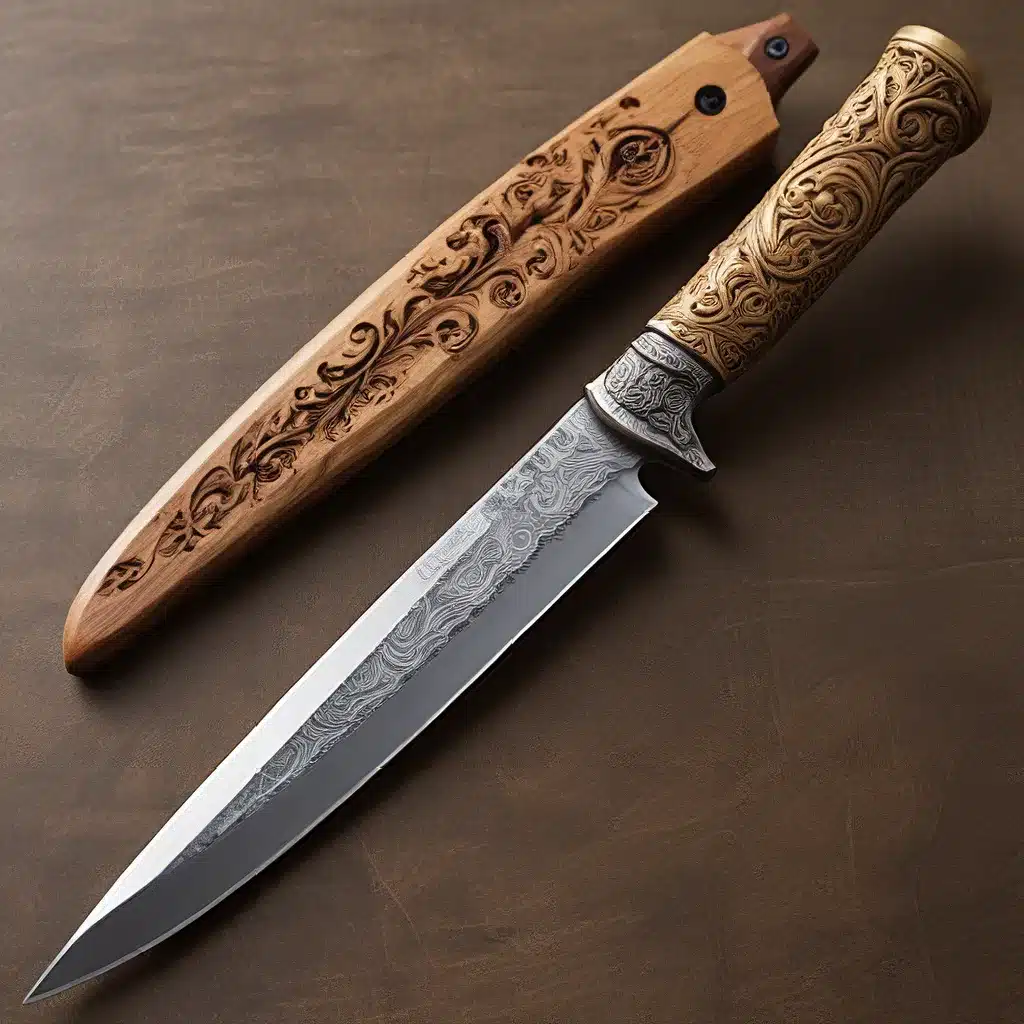
In the world of knives, there’s a delicate balance between form and function. While a knife’s primary purpose is to be a practical, utilitarian tool, many knife enthusiasts and artists have elevated the craft to a true art form. From intricate engravings to meticulously crafted handles, the intersection of decorative and functional knife design is a captivating realm that deserves closer attention.
The Evolution of Knife Design
As a lifelong knife enthusiast, I’ve witnessed firsthand the incredible evolution of knife design over the years. When I first started exploring the world of knives, the focus was predominantly on functionality – creating blades that were sharp, durable, and well-suited for a variety of tasks. But as the craft of knifemaking has progressed, a new wave of artisans has emerged, pushing the boundaries of what’s possible.
One of the key drivers of this artistic renaissance has been the increasing recognition of knives as more than just utilitarian tools. Florentine Kitchen Knives, for example, sought to create a butter knife that was both functional and visually appealing. By using a single piece of stainless steel and a matte polish, they crafted a knife that was neither a “decorative object nor a work of art,” but rather a tool that was “self-explanatory” in its form and function.
This blending of aesthetics and practicality is a hallmark of the modern knife design movement. Designers like Skye Maunsell and Jordi Veciana have sought to create everyday objects that are not only useful but also visually striking and elegant.
Pushing the Boundaries of Knife Design
As the field of knife design has evolved, artists have begun to push the boundaries of what’s possible. Take, for example, the “Dundee” butter knife, which features a unique elevated surface to prevent butter from soiling the table. Or the porcelain butter knife, a rarely-used material for this type of tool, which is naturally non-porous and easy to clean.
These innovative designs showcase the creativity and ingenuity of modern knife artists. Adam Johnston, a Scottish industrial designer, even drew inspiration from unusual tools like putty knives and paint scrapers to create a monomaterial object with a simple, sensual form.
But it’s not just the materials and shapes that are being reimagined. Some designers, like GYMNASIUM Studio, have looked to the past for inspiration, using the traditional Scotch hand tool as a starting point to create a butter knife with a unique, carved surface that enhances the experience of spreading butter.
The Intersection of Art and Function
As knife design has evolved, the line between art and function has become increasingly blurred. Micarta, a material typically used for knife handles, has been transformed into a cohesive piece that combines the handle and blade, creating a warm, durable knife that evokes the rippling texture of Damascus steel.
Shay Nifusi, an industrial designer from Tel Aviv, has created a stainless steel butter knife with a pill-shaped handle and a crafted blade, resulting in an iconic silhouette that is both functional and aesthetically pleasing.
But the true artistry of knife design isn’t limited to the physical object itself. Reto Schneller, an industrial designer, has taken a more conceptual approach, creating a hand-carved bone knife that pays homage to the ancient tradition of nose-to-tail cooking and the respectful utilization of an animal in its entirety.
Similarly, the team at Studio BET has crafted a minimalist bone china porcelain butter spreader that echoes the texture of fossils, connecting the raw and the cooked, the hunt and the hearth, and the beast and the bone china.
Navigating the Legal Landscape of Knife Design
As the world of knife design has evolved, so too has the legal landscape surrounding it. Copyright infringement has become a significant concern, with some unscrupulous individuals and companies attempting to copy the unique designs and artwork of successful knifemakers.
Jay Fisher, a veteran knifemaker, has been outspoken about the importance of protecting one’s intellectual property. He warns that ignorance of the law is no excuse, and that those who violate copyrights can face serious legal consequences, including fines and even prison time.
Herman Knives takes this issue very seriously, ensuring that all of our designs and artwork are properly protected and that we respect the intellectual property rights of others in the industry. We believe that innovation and creativity should be celebrated and rewarded, not exploited.
The Future of Knife Artistry
As the world of knife design continues to evolve, I’m excited to see what the future holds. Will we see even more innovative materials and cutting-edge technologies being incorporated into knife designs? Will the line between art and function become even more blurred, with sculptural knives that are as much a work of art as they are a functional tool?
One thing is certain: the passion and creativity of knife enthusiasts and artists will continue to drive the industry forward. And as long as we respect the intellectual property rights of our fellow knifemakers, the art of knife design will continue to flourish and inspire us all.
So, the next time you pick up a beautifully crafted knife, take a moment to appreciate the skill, the vision, and the artistry that went into its creation. Because in the world of knives, the possibilities are endless.


